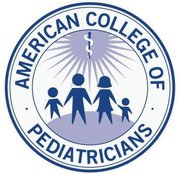
Heterosexuality is romantic attraction, sexual attraction or sexual behavior between people of the opposite sex or gender. As a sexual orientation, heterosexuality is "an enduring pattern of emotional, romantic, and/or sexual attractions" to people of the opposite sex. It "also refers to a person's sense of identity based on those attractions, related behaviors, and membership in a community of others who share those attractions." Someone who is heterosexual is commonly referred to as straight.
Conversion therapy is the pseudoscientific practice of attempting to change an individual's sexual orientation, gender identity, or gender expression to align with heterosexual and cisgender norms. Methods that have been used to this end include forms of brain surgery, surgical or hormonal castration, aversive treatments such as electric shocks, nausea-inducing drugs, hypnosis, counseling, spiritual interventions, visualization, psychoanalysis, and arousal reconditioning.

Sexual orientation is an enduring personal pattern of romantic attraction or sexual attraction to persons of the opposite sex or gender, the same sex or gender, or to both sexes or more than one gender. Patterns are generally categorized under heterosexuality, homosexuality, and bisexuality, while asexuality is sometimes identified as the fourth category.

The Kinsey scale, also called the Heterosexual–Homosexual Rating Scale, is used in research to describe a person's sexual orientation based on one's experience or response at a given time. The scale typically ranges from 0, meaning exclusively heterosexual, to a 6, meaning exclusively homosexual. In both the male and female volumes of the Kinsey Reports, an additional grade, listed as "X", indicated "no socio-sexual contacts or reactions" (asexuality). The reports were first published in Sexual Behavior in the Human Male (1948) by Alfred Kinsey, Wardell Pomeroy, and others, and were also prominent in the complementary work Sexual Behavior in the Human Female (1953).

The field of psychology has extensively studied homosexuality as a human sexual orientation. The American Psychiatric Association listed homosexuality in the DSM-I in 1952 as a "sociopathic personality disturbance," but that classification came under scrutiny in research funded by the National Institute of Mental Health. That research and subsequent studies consistently failed to produce any empirical or scientific basis for regarding homosexuality as anything other than a natural and normal sexual orientation that is a healthy and positive expression of human sexuality. As a result of this scientific research, the American Psychiatric Association removed homosexuality from the DSM-II in 1973. Upon a thorough review of the scientific data, the American Psychological Association followed in 1975 and also called on all mental health professionals to take the lead in "removing the stigma of mental illness that has long been associated" with homosexuality. In 1993, the National Association of Social Workers adopted the same position as the American Psychiatric Association and the American Psychological Association, in recognition of scientific evidence. The World Health Organization, which listed homosexuality in the ICD-9 in 1977, removed homosexuality from the ICD-10 which was endorsed by the 43rd World Health Assembly on 17 May 1990.
Richard A. Isay was an American psychiatrist, psychoanalyst, author and gay activist. He was a professor of psychiatry at Weill Cornell Medical College and a faculty member of the Columbia University Center for Psychoanalytic Training and Research. Isay is considered a pioneer who changed the way that psychoanalysts view homosexuality.

Homosexuality is sexual attraction, romantic attraction, or sexual behavior between members of the same sex or gender. As a sexual orientation, homosexuality is "an enduring pattern of emotional, romantic, and/or sexual attractions" exclusively to people of the same sex or gender. It "also refers to a person's sense of identity based on those attractions, related behaviors, and membership in a community of others who share those attractions."

Ego-dystonic sexual orientation is a highly controversial mental health diagnosis that was included in the American Psychiatric Association's Diagnostic and Statistical Manual of Mental Disorders (DSM) from 1980 to 1987 and in the World Health Organization's (WHO) International Classification of Diseases (ICD) from 1990 to 2019. Individuals could be diagnosed with ego-dystonic sexual orientation if their sexual orientation or attractions were at odds with their idealized self-image, causing anxiety and a desire to change their orientation or become more comfortable with it. It describes not innate sexual orientation itself, but a conflict between the sexual orientation a person wishes to have and their actual sexual orientation.

Same-sex parenting is the parenting of children by same-sex couples generally consisting of gays or lesbians who are often in civil partnerships, domestic partnerships, civil unions, or same-sex marriages.

The questioning of one's sexual orientation, sexual identity, gender, or all three is a process of exploration by people who may be unsure, still exploring, or concerned about applying a social label to themselves for various reasons. The letter "Q" is sometimes added to the end of the acronym LGBT ; the "Q" can refer to either queer or questioning.
John Edward Hill is an American family physician in Tupelo, Mississippi.
Watchmen on the Walls is an international evangelical ministry based in Riga, Latvia. It describes itself as "the international Christian movement that unites Christian leaders, Christian and social organizations and aims to protect Christian morals and values in society." According to a Southern Poverty Law Center (SPLC) Intelligence report the group's name derives from the Old Testament book of Nehemiah, in which the "watchmen" guard the reconstruction of Jerusalem. "The cities they guard over today, say the contemporary Watchmen, are being destroyed by homosexuality."
Jack Drescher is an American psychiatrist and psychoanalyst known for his work on sexual orientation and gender identity.
Various issues in medicine relate to lesbian, gay, bisexual, and transgender people. According to the US Gay and Lesbian Medical Association (GLMA), besides HIV/AIDS, issues related to LGBT health include breast and cervical cancer, hepatitis, mental health, substance use disorders, alcohol use, tobacco use, depression, access to care for transgender persons, issues surrounding marriage and family recognition, conversion therapy, refusal clause legislation, and laws that are intended to "immunize health care professionals from liability for discriminating against persons of whom they disapprove."

The American College of Pediatricians (ACPeds) is a socially conservative advocacy group of pediatricians and other healthcare professionals in the United States, founded in 2002. The group advocates in favor of abstinence-only sex education and advocates against vaccine mandates, abortion rights and rights for LGBT people, and promotes conversion therapy. As of 2022, its membership has been reported at about 700 physicians.
Homosexuality was classified as a mental disorder in the Diagnostic and Statistical Manual of Mental Disorders (DSM) beginning with the first edition, published in 1952 by the American Psychiatric Association (APA). This classification was challenged by gay rights activists during the gay liberation following the 1969 Stonewall riots, and in December 1973, the APA board of trustees voted to declassify homosexuality as a mental disorder. In 1974, the DSM was updated and homosexuality was replaced with a new diagnostic code for individuals distressed by their homosexuality, termed ego-dystonic sexual orientation. Distress over one's sexual orientation remained in the manual, under different names, until the DSM-5 in 2013.
Due to the increased vulnerability that lesbian, gay, bisexual, and transgender (LGBT) youth face compared to their non-LGBT peers, there are notable differences in the mental and physical health risks tied to the social interactions of LGBT youth compared to the social interactions of heterosexual youth. Youth of the LGBT community experience greater encounters with not only health risks, but also violence and bullying, due to their sexual orientation, self-identification, and lack of support from institutions in society.
Many health organizations around the world have denounced and criticized sexual orientation and gender identity change efforts. National health organizations in the United States have announced that there has been no scientific demonstration of conversion therapy's efficacy in the last forty years. They find that conversion therapy is ineffective, risky and can be harmful. Anecdotal claims of cures are counterbalanced by assertions of harm, and the American Psychiatric Association, for example, cautions ethical practitioners under the Hippocratic oath to do no harm and to refrain from attempts at conversion therapy.
The history of conversion therapy can be divided broadly into three periods: an early Freudian period; a period of mainstream approval of conversion therapy, when the mental health establishment became the "primary superintendent" of sexuality; and a post-Stonewall period where the mainstream medical profession disavowed conversion therapy.




